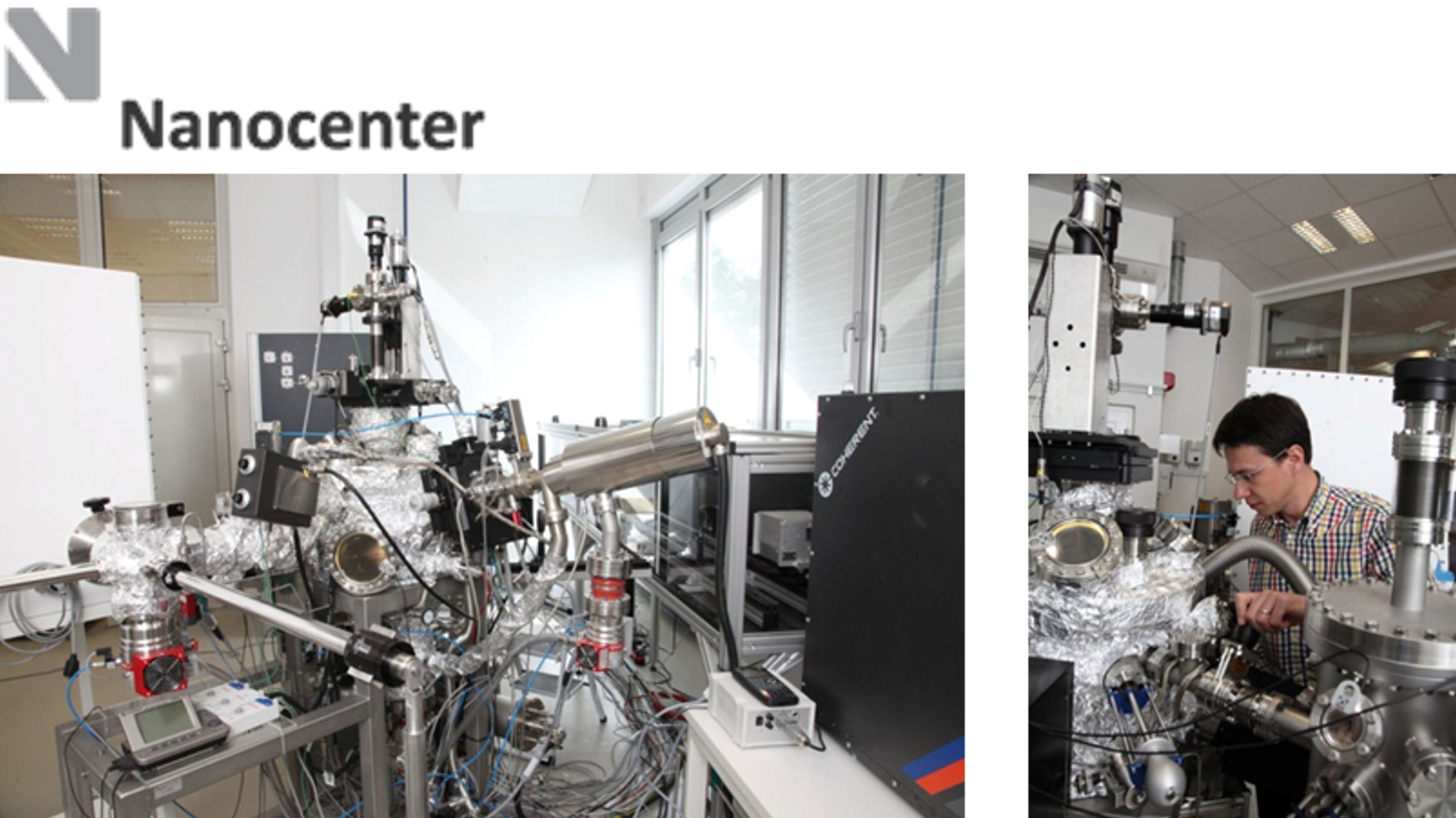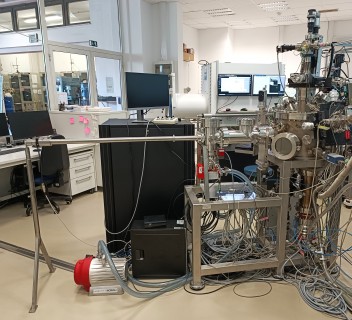Pulsed Laser Deposition

In June 2021 we installed
a new ultra-high-vacuum (UHV) PLD system. The new
system is equipped with an
ion-getter pump, titanium sublimation pump, valves with metal seals and a
bake-out tent that help to maintain an ultra-high vacuum environment (5 × 10-10
mbar), which is a special feature compared to usual PLD systems. Apart from the
resistive heater, a system for IR laser heating is also available enabling
substrate heating up to 1200 °C. The UHV PLD system is vacuum-connected to a
glove box that allows storage of reactive targets, a storage chamber for
storing up to 12 samples, and an analytical system for temperature-programmed
desorption (TPD). This PLD system can also be connected to a vacuum suitcase,
which enables the transfer of samples to devices for structural and chemical analysis
(XPS, JT-STM) located within other departments of our Institute. It is equipped
with high-energy electron diffraction (RHEED) systems, which enable the
monitoring of thin layer growth and structural analysis of the surfaces of
prepared samples. For the ablation of targets, additional optical
elements can be used for guiding the laser light from the existing KrF pulsed
laser.

Within Center of Excellence in Nanoscience and Nanotechnology we installed pulsed laser deposition (PLD) system at our department, which is a powerful technique for thin-film growth of inorganic materials mainly. The delivered system is dedicated for layer-by-layer growth and thus enables preparation of high quality thin films and structuring on nanoscopic level. The system is equipped with following major components: heater stage for laser and resistive heating of substrates, target scanning stage, loadlock for sample and target transfer, high-pressure reflection high-energy electron diffraction system, upgrade with UHV pumps (titanium sublimation pump, ion pump), oxygen plasma source, sputter source (1 x 1.3” target), connection with a glovbox. For ablation of target material KrF excimer laser is used with energy up to 700 mJ per pulse and max. repetition rate of 50 Hz. For laser-energy setting and diagnostics attenuator and corresponding camera are used, respectively.The system is in-situ connected with a storage chamber and chamber for temperature desorption studies. In addition, using UHV suitcase as-prepared samples can be in-situ transferred from PLD chamber to different systems for structural, chemical and electrical characterization (XPS, JT-STM, 4-PROBE), which are all located at Jožef Stefan Institute.


